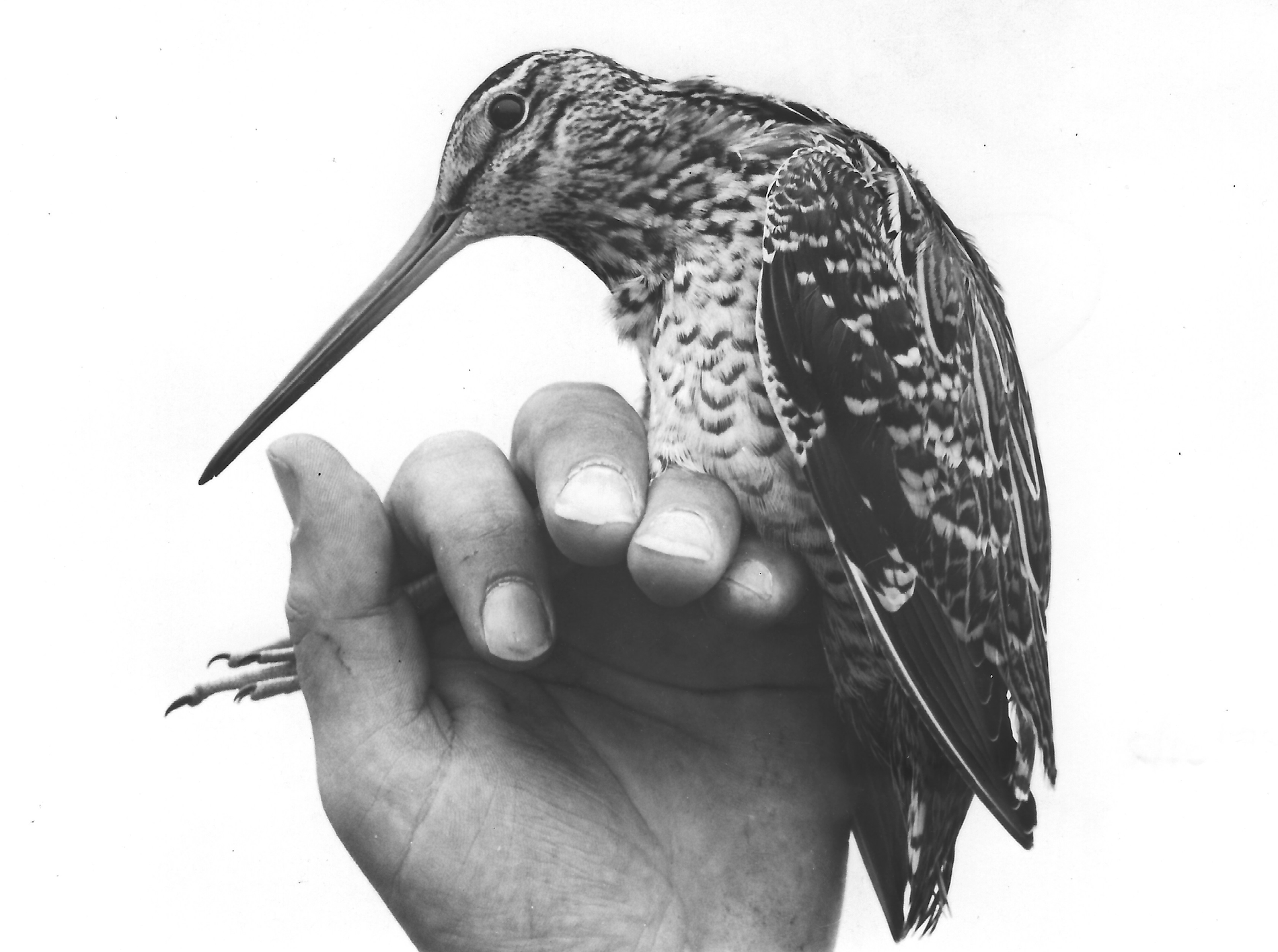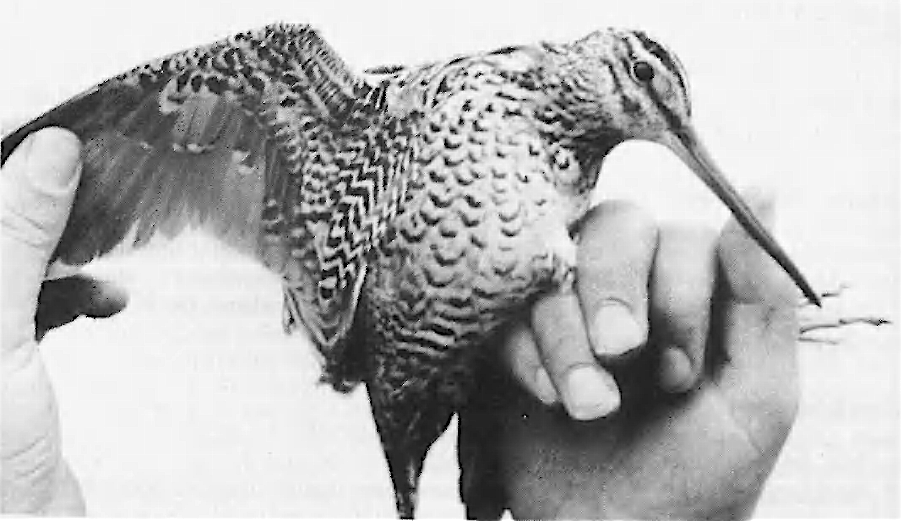Great Snipe Gallinago media


The first 15 county records, 1843-1952 were all of birds shot mainly September-October but with two others in January and May. Given that it is disgracefully still legal to shoot Common Snipe, G. Gallinago, and Woodcock, Scolopax rustica, it would be no surprise to find that this still occasionally happens. There have been just five records 1978-2020 with the last in 2020 the first since 1984. It is worth noting that on migration it can turn up in diverse habitats including short grass or sedges on lake edges or flooded fields, montane bogs, airfields and tracks in wooded areas; overall though it usually prefers drier habitat than that preferred by G. gallinago – witness the 1984 record where the bird was often found in sandy dunes with marram grass. British records 1950-2020 total 172 and are stable or possibly declining at about two per year.
| Site | First date | Last date | Count | Notes |
| Lincolnshire, site unknown | Autumn 1826 | - | 2 | Two were shot, no site details or date specified |
| Lincolnshire, site unknown | 01/05/1843 | - | 1 | A male bird |
| Marshchapel | 01/01/1850 | - | 1 | Shot |
| Tetney | 01/09/1852 | - | 1 | Shot |
| Scunthorpe | 01/09/1868 | - | 1 | Shot |
| Crowland | 17/09/1875 | - | 1 | Shot |
| Stickney | 04/10/1882 | - | 1 | Male, shot |
| NE Lincolnshire, site unknown | 02/10/1883 | - | 1 | Shot |
| Cowbit | 01/01/1896 | - | 1 | Shot |
| Spalding | 01/09/1896 | - | 1 | Shot |
| North Cotes | 03/10/1899 | - | 1 | Shot |
| North Cotes | 06/09/1899 | - | 1 | Shot |
| Marston STW | 12/09/1938 | - | 1 | Shot |
| Tetney | 20/09/1939 | - | 1 | Male, shot |
| Rothwell | 01/09/1947 | - | 1 | Shot |
| Rothwell | 01/10/1952 | - | 1 | Shot |
| Wisbech STW | 21/08/1969 | 23/08/1969 | 1 | |
| Saltfleetby-Theddlethorpe NNR | 08/10/1978 | 15/10/1978 | 1 | |
| Barton upon Humber | 23/03/1983 | 24/03/1983 | 1 | |
| Saltfleetby-Theddlethorpe NNR | 24/08/1984 | - | 1 | |
| Saltfleetby-Theddlethorpe NNR | 15/09/1984 | 18/09/1984 | 1 | Same as August bird |
| Sandilands GC | 02/10/2020 | - | 1 | 1CY+ bird |
Finder’s report: Great Snipe at Saltfleetby-Theddlethorpe NNR, October 8th, 1978.
by S. Lorand
Note: this account is from the original Rarities Committee submission. The BBRC report for 1978 noted that this species gets no commoner, despite the ever-increasing number of observers. There were just two records in 1978, the other one being in Kent, bringing the total from 1950-1978 to 47. Many birds were shot in earlier times and the (current) BBRC total up to 1949 is a staggering 532 birds!
Circumstances
During the afternoon of October 8th, P. Childs and J. Walker flushed a large snipe from an area of Buckthorn bushes interspersed with medium length grass near a patch of dried up freshwater marsh. The bird uttered a short grunt and flew only about 30 ft. where it dropped back into the grass. They flushed it again and although the wing panel and white outer tail feathers did not seem particularly conspicuous, they were in little doubt that the bird was a Great Snipe.
The area was searched the following day by K. Atkin, M. Mellor (MM), and S. Lorand (SL), but to no avail. The bird next appeared on October 13th in the same spot when PC caught it in a mist-net. He notified KA and SL, who were in the area and within a short time R. Lorand, G. K. Brown, C. Morrison and MM were also present.
Description
SL examined the bird and made the following description:
Head – crown blackish-brown with creamy central stripe. Dark line from bill to eye, otherwise buffish between bill and eye going into creamy supercilium which met at rear of crown giving a capped appearance.
Upperparts – nape and mantle black and brown. Mantle dark brown with buff fringes to feathers; rump and uppertail coverts similar but with broad buff fringes. Scapulars blackish with zig-zag rufous brown bars and buffish-white feather edges. Lesser coverts sepia tipped buff. Median coverts sepia with rufous-brown bars and pale tips. Outer coverts blackish, tipped white. Greater coverts were similar to median on the inner feathers. Primary coverts as outer greater coverts. Primaries and secondaries paler brown; secondaries broadly tipped white, primaries only narrowly tipped white and primary shafts whitish. Outer three tail feathers white with black-brown bars:

Underwing – axillaries were dark grey and white, densely barred in chevrons. Underwing coverts white with dark centres giving a strongly barred appearance.
Underparts – chin creamy white, throat and upper breast warm buff, mottled orange and sepia. Lower breast and belly greyish-white with shallow V-shaped dark grey bars. Flanks similar but with more buffish tinge, again barred, bars straighter at rear of flanks.
Bare parts – legs grey with pale greenish tint, soles of feet paler and pinker. Claws greyish-black. Bill stout at base (12 mm. depth at feathers), fairly think for 2/3 of length, upper mandible tapering more at tip which was slightly down-curved. Bill dark horn tipped blackish. Base of lower mandible medium horn. Iris dark brown and pupil dark bluish.
Biometrics – wing 146mm; bill 68 mm.; tarsus 41 mm.; weight at 13.00 hr. 162 gm. There were 14 tail feathers. The bird was ringed, 2A17475 and the released.
Observations after release – the bird called several times when in the hand, a deep, soft ‘scrurt’. When placed on the ground it initially stood and stretched its neck upwards, when it appeared heavy-bodied and deep chested with the head seeming small in proportion to the rest of the body.
Within a few seconds the bird suddenly ran forward then rose with a single ‘scrurt’ call and flew in a straight line only to drop about 20 yd. away in the grass. In flight it appeared to have quite a broad wing area and as it flew fairly slowly and dropped into the grass it somewhat resembled a crake or rail. Even at this short range the white outer tail feathers were not particularly conspicuous, and the white-edged centre wing panel did not stand out as well as the recent British Birds paper would suggest. The later was certainly there but is presumably less well marked in an autumn immature bird.
The bird was then left but on the following two days, October 14th and 15th, it was seen by many people from all parts of the country. It was not seen after October 15th.
(Account as per new Birds of Lincolnshire (2021), included September 2022)

